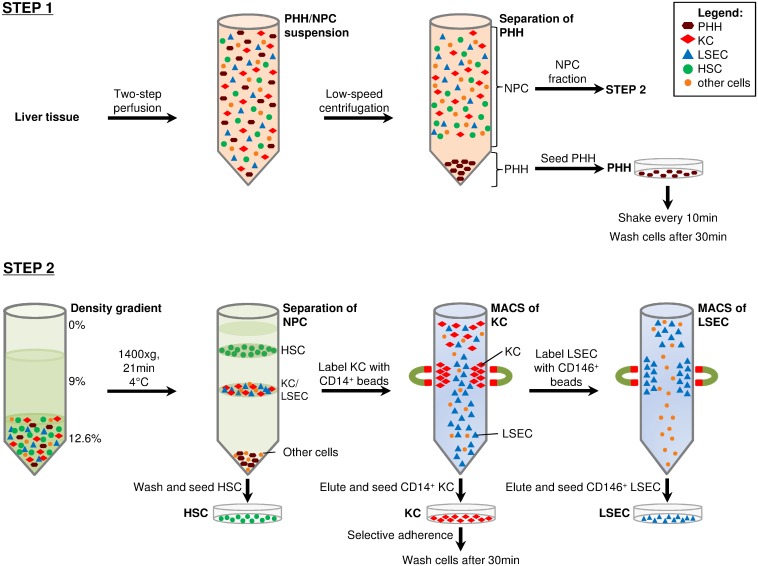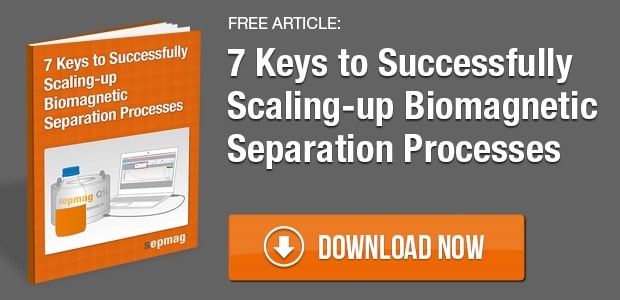Isolating and culturing primary human hepatocytes is an essential tool to measure liver function, study metabolism and perform hepatotoxicity drug tests. When investigating liver diseases comparative studies of diferent cells within the same patient sample are essential. This approach has many drawbacks since the liver is composed of 80% parenchymal cells (hepatocytes) and 20% non-parenchymal cells, making it difficult to obtain cellular fractions representative of all the subsets present in this organ. Additionally, the obtained cellular fractions usually lack the purity and viability necessary to analyse cell-specific features.
In order to overcome these issues, Melanie Werner and colleagues have developed a new method for isolation of Hepatocytes, liver sinusoidal endothelial cells, Kupffer cells, and stellate cells in human liver samples. This method allows the extraction of functionally active cellular subsets of high purity andquality. To maintain the physiological functionality the samples are gently digested by perfusion with collagenase, followed by two centrifugation steps that allow the isolation of hepatocytes.
The non-parenchymal cell fraction is separated into the different cell populations bydensity gradient centrifugation followed by two magnetic positive selections. The purified cellular fractions were viable for in vitro assays and all had a purity superior to 90%. The authors also demonstrate that the isolated cells can be kept in co-cultures which are essential to study interactions during pathological settings. For example, co-culture experiments using Kupffer cells and hepatocytes are a valuable tool to study xenobiotic metabolism and its pharmacological consequences.
By applying biomagnetic separation techniques it is now possible to obtain all main liver cellular populations from a single specimen. The development of this technique creates a tool to study the cellular mechanisms associatedwith liver function and disease,which are essential to unravel the role of each cell in the pathophysiology of chronic liver diseases.
All-In-One: Advanced preparation of Human Parenchymal and Non-Parenchymal Liver Cells. Werner, M., Driftmann, S., Kleinehr, K., Kaiser, G. M., Mathé, Z., Treckmann, J.-W., … Broering, R. (2015). Plos One, 10(9), e0138655. doi:10.1371/journal.pone.0138655
Related news:
- Microfluidic, marker-free isolation of circulating tumor cells from blood samples
- Designing, performing, and troubleshooting your magnetic separation strategy just got easier
- Magnetic separation using molecularly imprinted polymers





